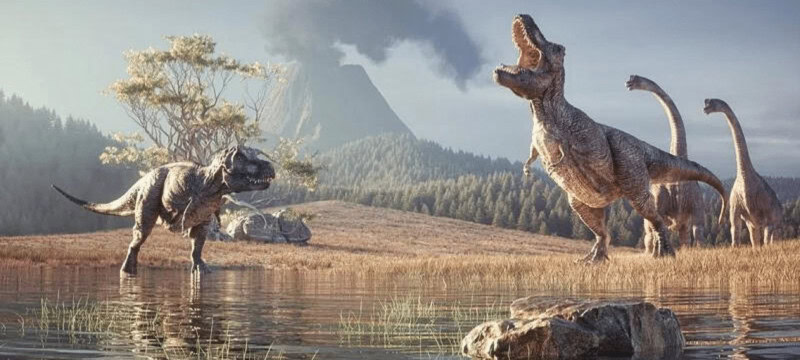Paleontologists have long debated whether dinosaurs shared characteristics with warm-blooded birds and mammals or were cold-blooded like reptiles. This distinction is crucial as it sheds light on their behavior and lifestyle.
Contrary to the traditional view of dinosaurs as sluggish reptiles reliant on external sources to regulate their body temperature, research over the past three decades has revealed evidence suggesting some dinosaurs were bird-like. These dinosaurs likely possessed feathers and possibly had the ability to internally generate heat.
Read more: First Detection of Water Frost on Mars Volcanoes
However, conclusive evidence pinpointing the metabolic nature of dinosaurs remains elusive. Clues gleaned from dinosaur eggshells and bones indicate a spectrum from warm-blooded to cold-blooded among different species.
A recent study published in Current Biology proposes that three major dinosaur groups adapted differently to temperature changes starting approximately 180 million years ago during the early Jurassic Period. This adaptation allowed them to regulate their body temperatures. The study, drawing from fossils of 1,000 dinosaur species and paleoclimate data, explores how dinosaurs spread across various global environments from the Triassic period (starting 235 million years ago) to the Cretaceous period (ending 66 million years ago with the asteroid impact).
According to the study, meat-eating theropods like Tyrannosaurus rex and plant-eating ornithischians like Triceratops and Stegosaurus likely evolved the ability to generate internal heat. These groups expanded into colder climates during the early Jurassic Period, demonstrating their adaptability to diverse environmental conditions.
Conversely, large herbivorous sauropods such as Brontosaurus and Diplodocus primarily inhabited warmer, lower-latitude regions. The study suggests these sauropods thrived in arid, savannah-like environments, which shaped their evolutionary trajectory.
The study’s lead author, Dr. Alfio Alessandro Chiarenza, emphasized that warm-blooded animals typically exhibit greater activity levels and may engage in behaviors like nest-building, contrasting with the more sedentary habits of cold-blooded animals.
While the findings provide new insights into dinosaur physiology and ecological adaptations, they remain subject to further scrutiny and refinement as new fossil discoveries and climatic data emerge. This ongoing research aims to deepen our understanding of how dinosaurs lived and interacted with their environments throughout their evolutionary history.









